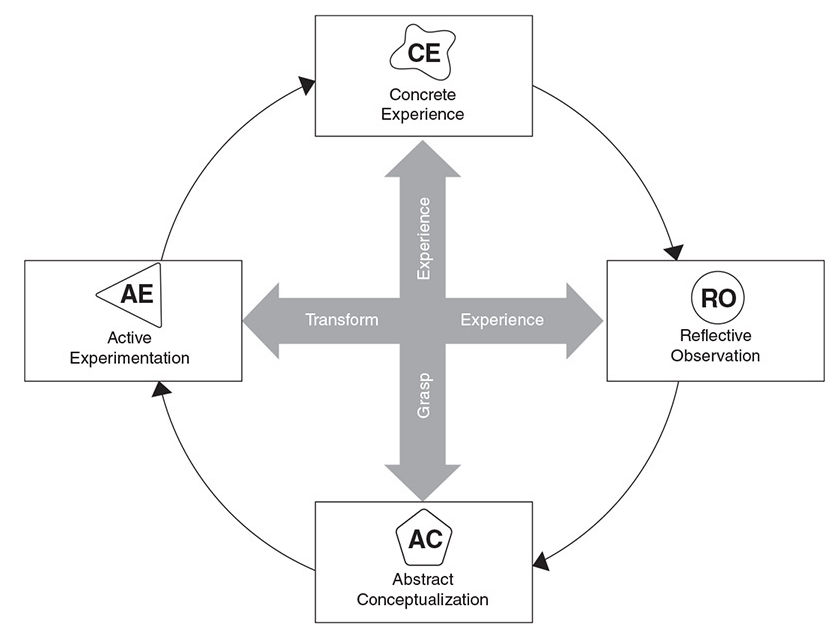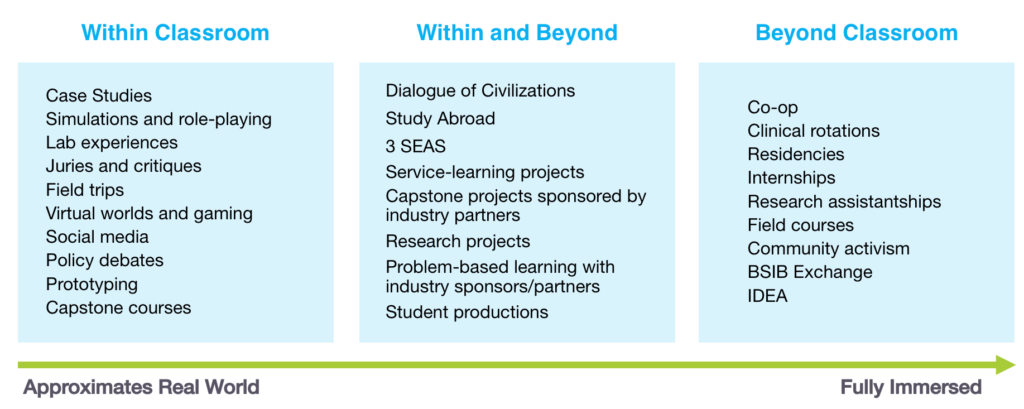In his book Education and Experience, renowned education philosopher John Dewey wrote, “There is an intimate and necessary relation between the process of actual experience and education” (1938). In the years since Dewey first penned these words, studies have repeatedly confirmed the proposition that students are more likely to be motivated and retain what they’ve learned when they are actively engaged in a learning experience (Freeman et. al. 2014; Hake 1998; Springer, Stanne & Donovan, 1999).
Every introduction of experiential learning should begin with Kolb’s classic (2015) model: we have some kind of concrete experience, about which we reflect and make some new understanding, then act upon that new understanding.

(Kolb, 2014, p. 51)
Experiential learning describes a continuum of activities that, on one end, include classroom exercises that resemble “real life” and, on the other end, involve learning-through-doing beyond the classroom.
For example, experiential learning within a classroom setting might include simulations, labs, or debates. Beyond the classroom, experiential learning can include co-op employment, service learning, and even student-initiated engagement such as community activism.
Examples of Experiential Learning at Northeastern University

There are the two central concepts of experiential learning: (1) active engagement and (2) reflection. To maximize the learning value of an experience, one must reflect upon it in order make connections among features of that experience and other aspects of one’s life.
While formal experiential learning activities can build-in that reflection step as part of the experience, developing “every day experiential learning” skills to maximize the learning from all of our experiences requires a unified learning ecosystem to support the learner across contexts and across time, to learn these skills and ingrain them as habits.
References
Dewey, J. (1938). Experience and Education. New York: Macmillan Company.
Freeman, S., Eddy, S.L., McDonough, M., Smith, M.K., Okoroafor, N., Jordt, H. & Wenderoth, M.P. (2014). Active learning increases student performance in science, engineering and mathematics. Proceedings of the National Academy of Sciences, 111(23), 8410-8415,
Hake, R. (1998). Interactive engagement versus traditional methods: A six-thousand-student survey of mechanics test data for introductory physics courses. American Journal of Physics, 66(1), 10.1119-1.18809
Kolb, D.A. (2015). Experiential Learning: Experience as the Source of Learning and Development, 2nd Ed. New York, NY: Pearson.
Springer, L., Stanne, M.E., Donovan, S.S. (1999). Effects of small group learning on undergraduates in science, math, engineering, and technology: A meta-analysis. Review of Educational Research, 69(1), 21-51.
